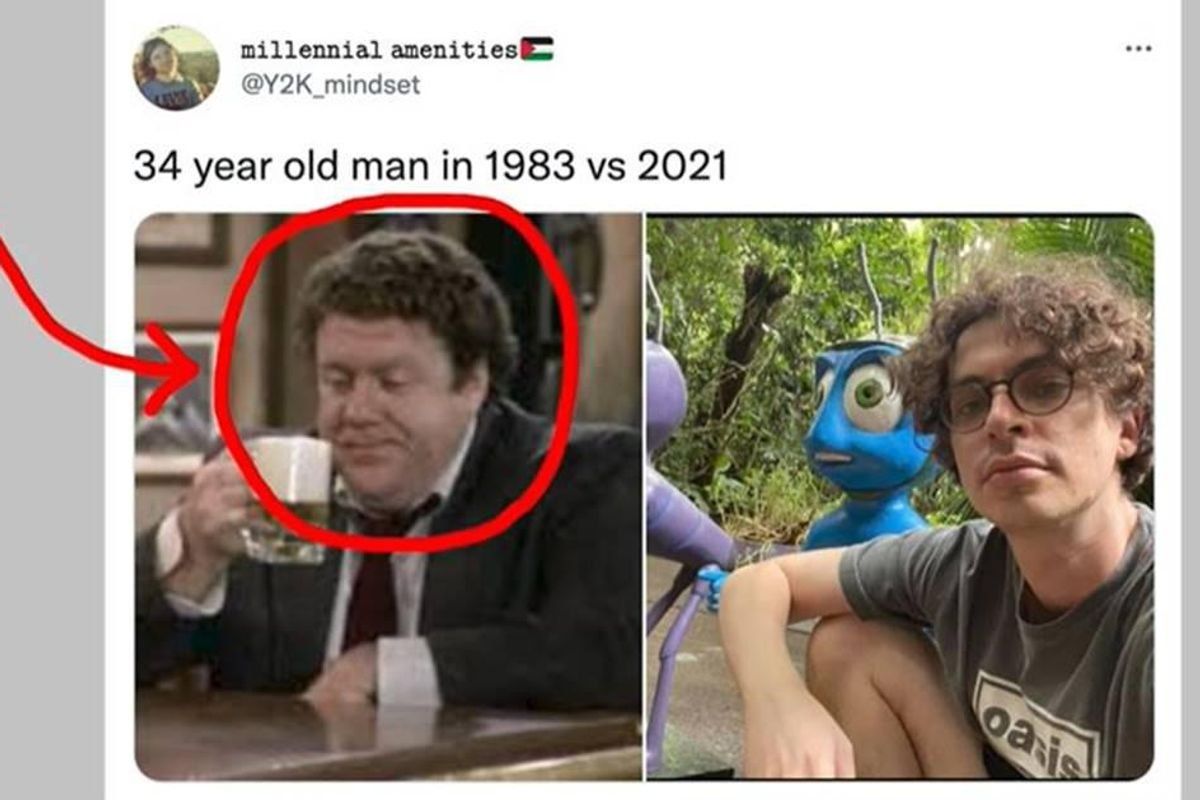The fascinating reason people looked much older in the past than they do today
Why did teenagers look like they were in their mid-30s?

Norm was only in his 30s?
Ever look at your parents' high school yearbooks and think people looked so much older back then? All of the teenagers look like they’re in their mid-30s and the teachers who are 50 look like they’re 80. When we watch older movies, even those from the 1980s, the teenagers appear to be a lot older as well. Why is it that they looked so much older? Was life harder? Did people act more mature? Did they spend more time outdoors and less time playing video games? Is it their sense of fashion? Were they all smokers?
Educator Michael Stevens, who runs the super-popular Vsauce YouTube channel, explains the phenomenon in a video called, “Did people used to look older?” In it, he explains that people in the past appear a lot older due to retrospective aging.
This is how it works: when we see people in the past, they are wearing outdated styles that we associate with older people; therefore, we think they have aged rapidly. For example, a teenager in the 1950s may have been in fashion while wearing thick Buddy Holly-style glasses.

But as people age, they tend to cling to the fashion of their youth. So many people of that generation continued to wear the Buddy Holly-style glasses into their 50s. So when younger people see those glasses they see them as old people's glasses and not a hip kid from the '50s.
So in the photo from the '50s, the teen appears to look a lot older because our perspective has been tainted by time.

But it isn’t all just an illusion. Stevens also points out that people did age faster back in the day due to differences in nutrition, lifestyle and medicine. In addition, he also does a deep dive on how a person's name can affect their appearance, referencing the Dorian Gray effect, which theorizes that cultural stereotypes linked to a name come to be written on the faces of their bearers, as well as the name matching effect, in which people whose faces "match" their names tend to be better perceived.
Basically, this 22-minute video is chalked full of fascinating tidbits. Give it a watch below.
- YouTubewww.youtube.com
It might be worth noting that, in addition to healthier lifestyle options, younger generations have more access to anti-aging procedures than ever before. "Tweakments," like fillers and botox, are less expensive and more readily available than ever—not to mention every anti-aging cream, serum, and cleanser known to man. And many millennials and Gen Zers take advantage of that, whether prompted by selfie anxiety, a growing obsession with youth, or some other motivation.
Plus, millennial and Gen Z fashion often honors their inner child. Nostalgic cartoon tees, colorful prints, cutesy accessories, etc. Granted, under the retrospective aging theory, even those styles could one day look dated, but they are so youthful that it's hard to imagine that being the case. That said, can't wait to see bunch of geezers sporting those broccoli haircuts.
This article originally appeared three years ago.
- Millennial shares 'proof' they've set the new standard for what it looks like to age ›
- Justine Bateman boldly embraces her aging face, putting a new spin on 'aging goals' ›
- The 17 harsh truths about aging that people were never 'prepared' for ›
- Why do people in old photos look so much older than people do today? - Upworthy ›


 A woman with dementia wrote a poem with one of her children and it's bringing people to tears.
A woman with dementia wrote a poem with one of her children and it's bringing people to tears.  "The Magic Words" is a book of poetry prompts from Joseph Fasano.
"The Magic Words" is a book of poetry prompts from Joseph Fasano.  Caregivers try many different ways to communicate with people living with dementia.
Caregivers try many different ways to communicate with people living with dementia.  Student daydreaming during class lecture.
Student daydreaming during class lecture. Cozy nap time: catching some Z's on the couch.
Cozy nap time: catching some Z's on the couch. Focused work in a modern, plant-filled office space.
Focused work in a modern, plant-filled office space. Multitasking mom: working, baby in arms, and a curious pup.
Multitasking mom: working, baby in arms, and a curious pup. Caretaker comforts an unwell child with a thermal strip on her forehead.
Caretaker comforts an unwell child with a thermal strip on her forehead. Cognitive empathy involves understanding how others feel.
Cognitive empathy involves understanding how others feel. Emotional or affective empathy means feeling what another feels.
Emotional or affective empathy means feeling what another feels.